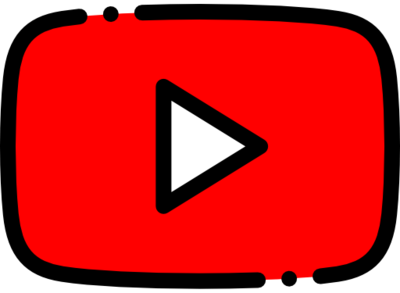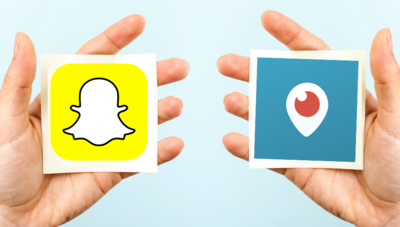
Facebook, Instagram, TikTok and Periscope are some of the leading social media trend platforms which allows users to engage with your friends and followers by sharing stories. People are hardwired to listen to stories.
What are your stories? They are an essential part of differentiating yourself from competitors because they define you and they shape your unique approach to the services and expertise you provide.
One concern I hear from a lot of clients is the fear that they don’t have any exciting stories to tell. When I drill down, I’ve never found this to be the case. It’s much more common to discover that clients are so used to the amazing results they get with their clients that they dismiss the significance of the outcomes or take the successes in stride as if achieving them was no big deal.
For your clients, the outcomes you achieve may have saved the day. They may seem nothing short of miraculous. Don’t make the mistake of thinking that “anyone” could have created those results. You brought your unique perspective, honed from your personal journey, to the situation and that’s what enabled you to approach the problem in that particular way.
Welcome to the Video Stories generation!
Video stories are rapidly becoming the preferred way to share information online, and it’s never been easier. You’ve got a growing number of options for creating and sharing your video content, as well as ways to use Web video to grow your influence and extend your brand.
When the Internet started out, we felt very lucky just to share text-based messages, which seemed like a miracle in itself back in that long-ago time. Pictures and HTML changed everything, creating the highly visual Internet you know today.
Streaming audio was next, quickly embraced by corporations, entrepreneurs, and speakers. Tools emerged to make it easy to record and share audio, leading to a booming growth in teleseminars.
Video initially posed a challenge due to bandwidth. But as technology changed, recording, uploading, and sharing video became easier. YouTube led the way, followed by other sites like Vimeo. For a while, the ability to easily produce Web videos outpaced the ease of sharing more than just the link to those clips.
Video dramatically increases the impressions and visibility of your social media posts. The combination of sight-sound-motion holds attention, and the combination of your face and voice creates a sense of intimacy and personal engagement that accelerates the like-know-trust cycle. The percentage of video content on the Internet increases every year, and experts say we’re still at the early adoption point. Text-based posts aren’t going to go away, but video is definitely a valuable weapon to have in your online arsenal.
Shorter is better. If possible, get your message across in 30 seconds, even if that includes a call to action to learn more from a Website. Viewership decreases as length increases unless the topic is of extremely high value and actively sought-out by the viewer. So someone might watch a five-minute video on how to change a flat tire or make a recipe because of the strong desire to learn the subject matter, but he or she is unlikely to watch a five-minute promotional video that randomly appears in the Facebook feed. Try to stay between 30 seconds and one minute unless you’re sharing content that meets an urgent user need. Even with content that is part of a video course, realize that most people don’t like to remain tied to their screen for more than five minutes, so break your content up into short, bite-sized pieces.

YOUTUBE
YouTube is the granddaddy of video sites. It’s where people turn first for entertainment and how-to videos, and given its enormous traffic, it’s also the place to post your video in order to reach a huge, global audience.
Videos on YouTube can be available to the public, or restricted to a private audience. The site makes it simple to share with the major social media platforms, and serves up the code you need to embed a video on your blog or Website or share the video via email. Many people aren’t familiar with YouTube’s easy video editing capabilities.
Though not as robust as a full video editing suite like Microsoft Movie Maker or Apple iMovie, YouTube can still get the job done with the ability to make fundamental video and audio enhancements. You can add “cards” in the sidebar to take a viewer poll, or promote a Website or related video.
Especially important is the ability to add subtitles and closed captioning. Adding subtitles to your videos increases ease of use. Viewers can get the gist of the content even if they’re in a location where they can’t listen to audio.
Hearing-impaired viewers aren’t left out. Viewer engagement rises because they’ve got two elements to watch—the action on the video and the subtitle. Subtitles can also keep a Website or call to action in front of the viewer while you discuss related content.
YouTube is owned by Google, so it should be no surprise that it has its own powerful search engine running the site. That makes tagging your videos and writing keyword-specific video descriptions all the more important because you want your videos to be easily searchable and findable even by people who don’t know exactly what they’re looking for.
YouTube links share well on Twitter and embed easily on WordPress. But when it comes to Facebook, old rivalries die hard. Google and Facebook are long-time competitors, so although YouTube makes it easy to share videos on Facebook, Facebook’s algorithms are rumored to be unfriendly to videos uploaded from YouTube.
YouTube has added a streaming capability with YouTube Live. Keep an eye on YouTube Live’s developments.

FACEBOOK LIVE
Facebook Live is relatively new, but it’s made a good debut. It’s part of the Facebook phone app, and it makes it seamless to record video with your cell phone and upload directly to Facebook. One plus is simplicity, as Facebook Live removes the middleman of downloading a video to your computer in order to upload it to Facebook, or hoping that the camera’s sharing capabilities load correctly.
The biggest win, however, is that Facebook appears to give preference in its algorithm to “native” video. Anecdotal evidence strongly suggests that Facebook exposes your native video posts to more people than the organic reach of your average post. The downside is that Facebook Live, at the time of this writing, doesn’t make subtitles, cards, or other enhancements an option.
Here’s how to get around Facebook’s video bias. Use your cell phone to shoot a video and email it to yourself (or use Dropbox or a similar file-sharing system). Download it onto your computer and add subtitles either in YouTube or in a program such as Windows Movie Maker. Save the subtitled file as an MP4 and upload it to your computer, then post the new “native” video to Facebook without the YouTube bias.
Facebook Live is valuable for making quick, slice-of-life videos on the go. If you know you won’t get around to adding subtitles no matter their value, posting with Facebook Live and gaining the advantages of native video is much better than not doing video at all.

PERISCOPE, SNAPCHAT
Periscope is optimized for on-the-go as-you-are videos. The core idea was to make it easy to take and share live video of where you are in the moment and share it easily on Twitter.
One of the best ways is to incorporate the story in a live presentation and then post a link to the video of your speech, Twitter allows users to view Periscope broadcasts live in their Twitter feeds, providing a wider exposure to a larger audience than with the Periscope app alone.
Check out periscope.tv and you will find the step by step procedure on how to embed Tweets with Periscope broadcasts, you should study both the timeline function and tweets embedding function, visit publish.twitter.com and paste in a Tweet permalink or Tweet timeline URL. When embedding a Tweet with a link to a Periscope broadcast, the full broadcast video is included.
Periscope is connected to Twitter, that’s where you’ll be promoting your broadcasts primarily—so do some research on your Twitter audience to find out when they’re most engaged with your posts.
Even if some of your followers miss out, the app will save your videos to the app by default (although you can delete them manually if you want to), and they’ll be available for viewing by your followers for 24 hours. You have the option of saving your videos to your phone’s camera roll.
Snapchat is very popular with the young adult crowd because it favors short videos that are theoretically not saved or shared elsewhere, vanishing after a certain time interval. Savvy users realize that nothing online ever really goes away, but the ephemeral promise of Snapchat makes it a fun and trendy way to share in-the-moment observations and asides to build engagement with your audience.
Snapchat and Periscope have high intimacy because of the casual format. They’re great for augmenting an established relationship with your most dedicated customers and followers, and lend themselves especially well to entertainment and lifestyle-oriented businesses.
GOTOWEBINAR, WEBINARJAM, AND ZOOM
The programs I’ve talked about up to this point are great for casual chats, slice-of-life videos, testimonials, and product demos. But if you want to run true online events, you’ll need something with more bells and whistles.
Skype can work for small meetings, but recording requires an addon. The benefit from inclusive programs like GoToWebinar, Zoom, and WebinarJam comes in the all-in-one package. Features like a live chat capability for attendees during the Webinar, easy recording and download, the ability to screen share, switch who is controlling the screen, and have a host running the event behind the scenes all become increasingly important as your events scale in complexity and number of attendees.
Unfortunately, the Webinar platforms don’t all offer exactly the same list of features, so you’ll have to make trade-offs. You may be able to test-drive packages by being a guest on someone else’s Webinar and seeing how easy (or difficult) the software is to use.
Factor in your own technological comfort level and level of frustration on event days to decide whether it’s important for you to have a moderator. Think about how you want to store, share, and deliver your Webinar. Some programs can automatically share to YouTube, but make creating and saving an MP4 file difficult. Ideally, you want to be able to share and save the resulting video in a variety of ways.
Scalability matters. If you’re just starting out, you want a program that can at least handle a couple of hundred attendees, and worry about trading up when you grow your following. If you’ve already got a substantial following, a large user base, or a big membership, look carefully at maximum capacity vs. price.
Some programs include the ability to create polls and handouts and to handle event registration. Although you can use multiple software packages to create those elements separately, it’s nice not to have to keep switching among programs.
Think about whether you want to use a separate platform to provide a dial-in phone number for the audio or whether you want phone/VoIP (Voice over Internet Protocol) to be inclusive with the Webinar package. The fewer separate pieces you or your moderator have to wrangle, the less stressed you’ll be.
Another area where packages differ is in registration and promotion. Some packages focus only on the visual component, leaving you to handle registration through other programs. Others not only handle sign-ups but have built-in capability to create event landing pages, autoresponder emails to attendees, easy social media sharing, and sales tools like countdown timers and the ability to present a click-to-buy-now offer during the Webinar. Those capabilities might not mean as much if you are already using robust programs to do those things (and have staff to help you), but if you’re a small organization or flying solo, it’s nice to have all those elements integrated and easy to use.
Your choices on how to utilize Web video are wide and varied; there’s something for every level of technology proficiency, audience taste, and personality. The popularity of video content and its success on social media means that video is here to stay, and utilizing it effectively is essential to growing your influence and brand. Lucky for you it’s easier to do than ever before!